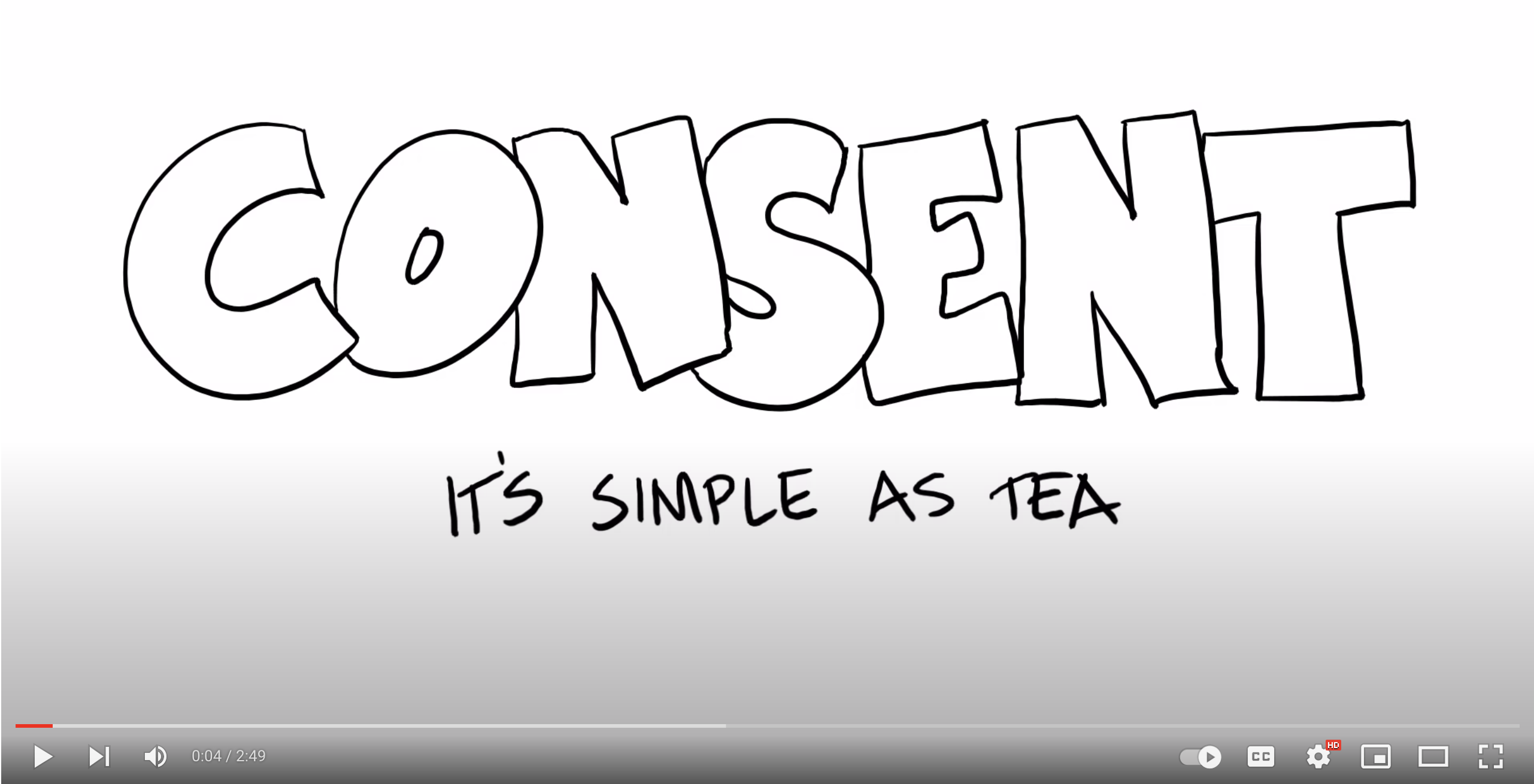Consent
At its core, consent is permission or agreement to do something. In the context of intimate relationships, consent is agreeing to be sexual with a partner and letting them know that the sexual activity is desired. Consent is a necessary and normal part of sex and sexual relationships. It is important to seek consent before any type of touch or before escalating to a new level of intimacy. Checking in early and often builds a foundation of trust and open communication.
Everyone should get to make choices about what they do with their body

Consent FRIES
Consent is…
Freely Given
Without pressure, intimidation, or substances such as drugs or alcohol
Reversible
Decision can be changed by anyone at any time, regardless of previous experience or other factors
Informed
All relevant information is provided ahead of time (i.e. use of contraceptives and all planned activities)
Enthusiastic
Without obligation or expectation
Specific
Consenting to one action or location does not equal consent to all (i.e. going to the bedroom to make out does not equal consent for sex)
Bystander Intervention
Recognizing a potentially harmful situation and responding in a way that could positively influence the outcome.
Being prepared with known strategies for intervening is a critical step in becoming an informed bystander. The more comfortable a person is with the potential strategies, the more likely they are to use them when confronted with a situation that is or could potentially become dangerous.
5 D’s of Bystander Intervention
Direct: Directly intervene by speaking up about the harm. Be firm and clear.
Distract: Take an indirect approach to de-escalating the situation. Distracting the person causing harm gives the person experiencing harm a chance to move away.
Delegate: Seek help from someone else. Assess the situation and determine the best method of intervention; delegate tasks to others around you.
Delay: Once the incident has ended, check in with the person experiencing harm. This shows the individual that they, and their identities, are valued.
Document: If another person is intervening, it can be important to document the situation.
S.T.O.P
Another useful method for remembering bystander intervention strategies is the acronym S.T.O.P. (Shift Focus, Talk, Object, Partner):
-
(S) SHIFT FOCUS: The lowest pressure option is to create a distraction to disrupt the focus of the potential victim and/ or perpetrator to allow them to get out of the problematic situation. If it is appropriate, use humor or an excuse to divert the attention of the perpetrator. This creates an opportunity for the potential victim to walk away in a non-confrontational manner.
-
(T) TALK: Talk to the perpetrator and/or the potential victim and point out what you are observing. For instance, if drinking is involved, suggest that it might be better if everyone goes home until they are sober. This allows the perpetrator an opportunity to stop and provides the potential victim the opportunity to leave.
-
(O) OBJECT: This strategy confronts harmful behavior directly by objecting to what is being witnessed. This response allows the potential victim to escape the situation. Use direct and assertive language.
-
(P) PARTNER: This strategy is similar to delegation and involves seeking partners in your community who may be better equipped to step in if you feel uncomfortable or unsafe. Potential partners include friends, supervisors, bouncers, professors, public safety or police officers, and residence life staff. Familiarize yourself with campus and community resources and think about who you can reach out to in various settings and scenarios.
Engaging Men
In the world of intimate partner violence prevention, male-identifying and non-binary folx are often left out of the conversation or dismissed as perpetrators. We believe that bringing male voices to discussions of healthy vs toxic masculinity, the impact of pop culture in stereotypical gender roles, and shifting our culture is a key aspect of prevention work. Interpersonal violence impacts everyone and everyone has a role to play in the prevention and elimination of gender-based and sexual violence. For more information on our Engaging Men curriculum, the Men’s Engagement student committee*, or ways for your group to get involved, email bravebu@bellarmine.edu.
*We encourage women and female-identifying students to participate on other committees to create space for male-identifying voices